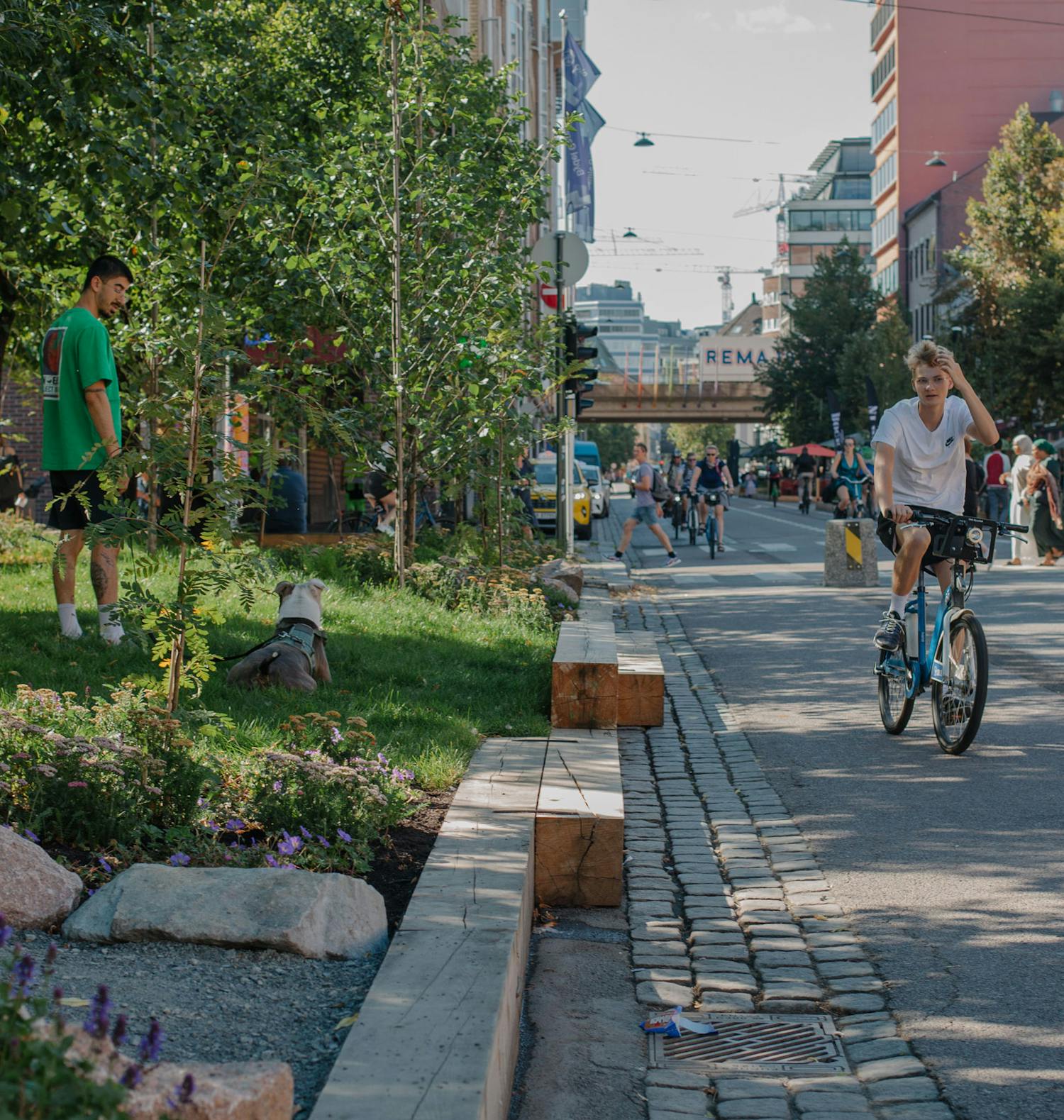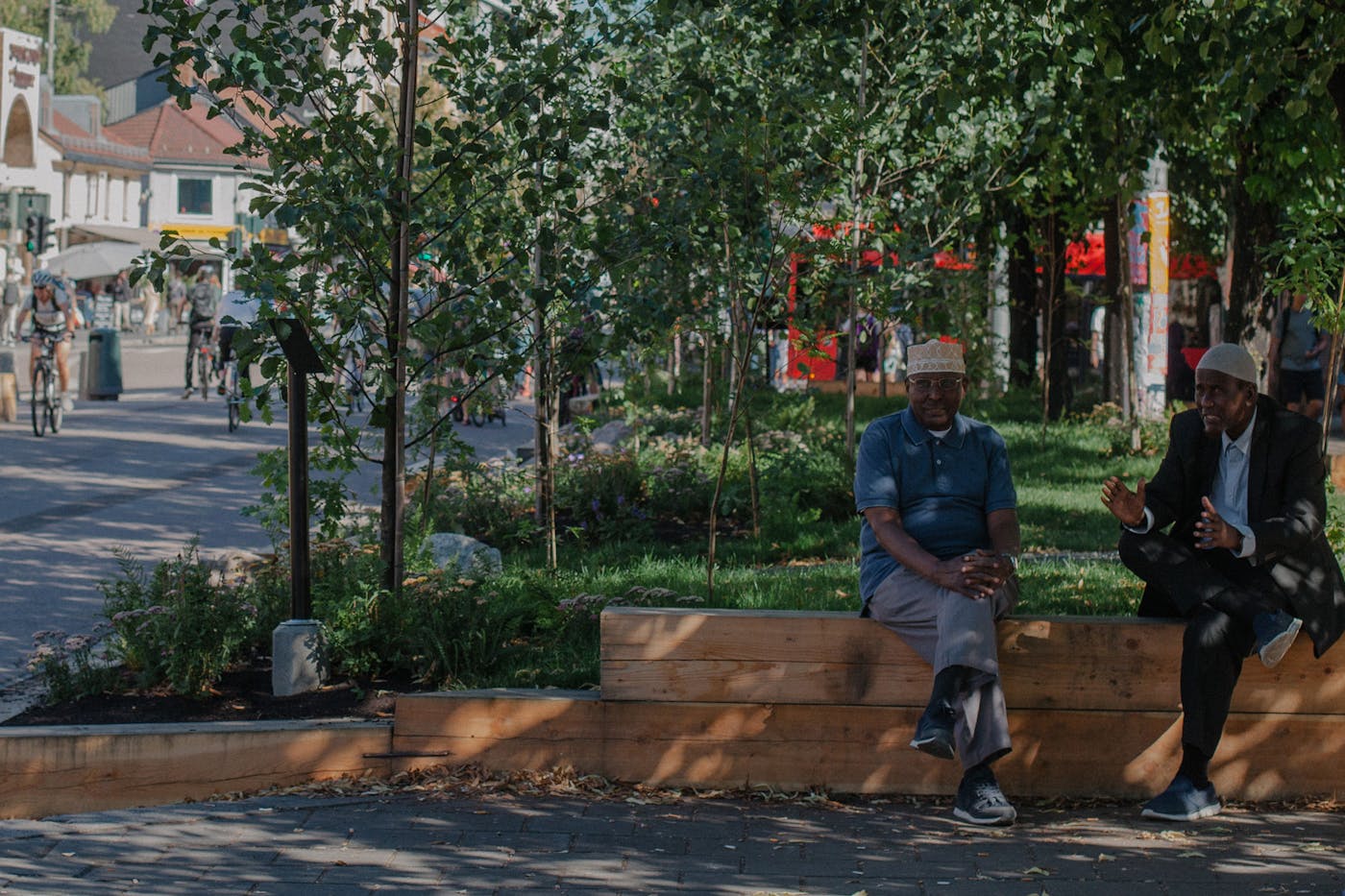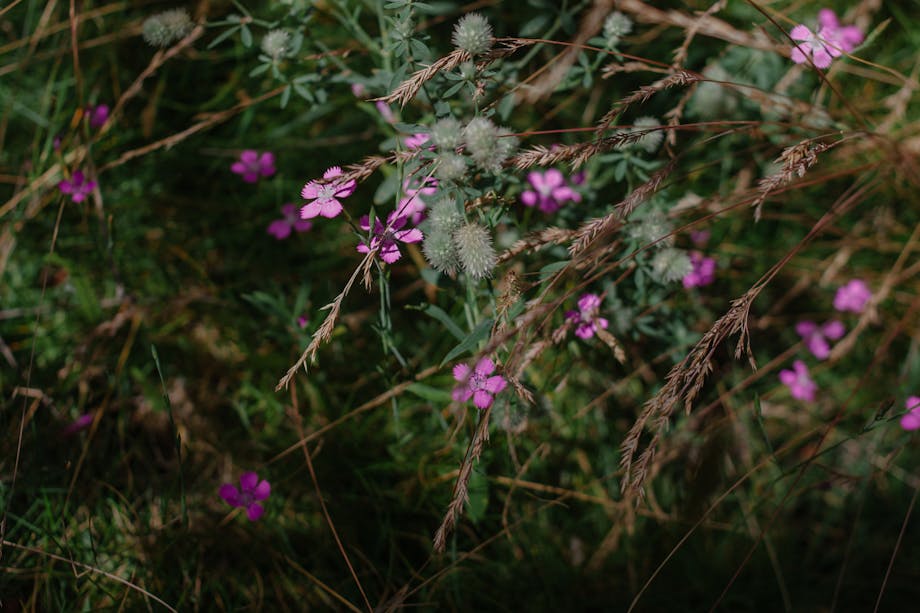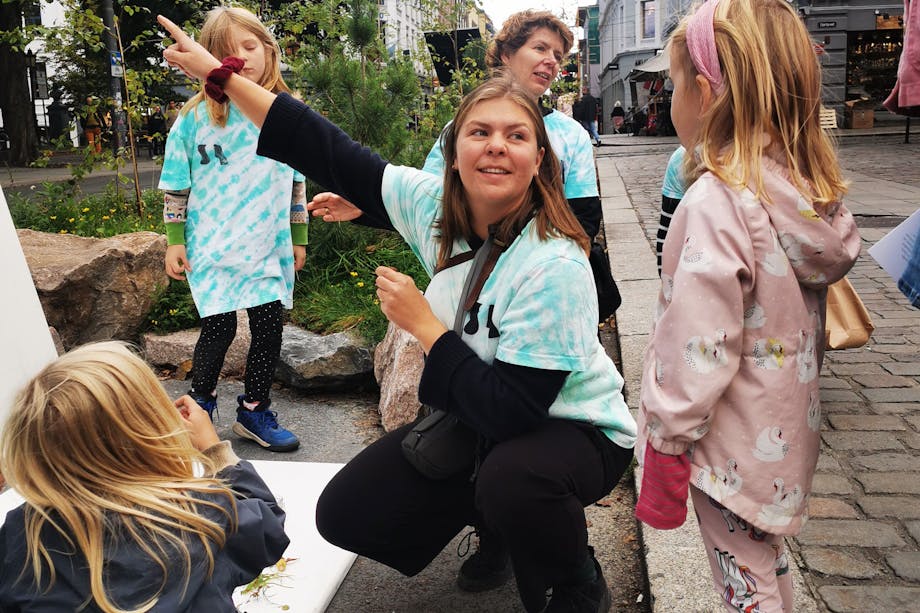Gata Grønland
and Kirkegata
Two public life experiments that rethink how the streets of central Oslo are used.

Curious for more?
Kjersti Wikstrøm
Managing Director, SLA Norway, Architect, Urbanist
Location
Oslo, Norway
Size
4,500 m2 / 7,000 m2
Year
July 2022 — October, 2024
Client
The City of Oslo v/ Bykuben
Role
Landscape Architect, Lead Consultant
Partners & Collaborators
Fragment, The City of Oslo
Awards
2023, OMA Awards — 'Highlight of the Year'
Challenges
Typology
In summer 2022, selected public spaces in Oslo were transformed. Where previously there were cars and asphalt, forest trees, city life, people, and biodiversity moved in. The goal is to take back our streets, connect nature and city more closely, and showcase a completely new way for Oslo to look, feel, and function.

SLA was together with Fragment and The City of Oslo behind the ‘public life experiments’ that transformed the two central Oslo streets Kirkegata and Gata Grønland.
“With the public life experiments in Kirkegata and Gata Grønland, we introduce a radically new form of city nature to Oslo. City Nature is not like the nature we know from forests, mountains, or open landscapes. City Nature is a new type of designed nature: A man-made solution to man-made problems that learns from nature’s processes and principles. City nature is something we design to create a better quality of life and to create places for life – all life,” says Kjersti Wikstrøm, Managing Director of SLA.


In the public life experiments in Gata Grønland, SLA collaborates with the local businesses and citizens to close the street over the summer. The aim is to investigate how a different type of people-friendly street can be created. The design of Gata Grønland is inspired by the Norwegian lowlands and has a distinct leafy feel and lush flower meadows together with 5-meter-tall birch and rowan trees. Edible and fragrant herbs and berry plants, such as oregano, mint, sage, and blueberries are planted in the meadow. Here, citizens and users take back their their street, while pedestrians, cyclists, and green space are given priority by maximizing green public space and by making room for urban furniture, outdoor seating areas, and new city nature that invites discovery and play.




In the public life experiments in Kirkegata, we have created a temporary ‘city forest’ with rowans, ferns, blueberries, mulberries, calluna, erica, and heather. 4-meter-tall pine trees as well as spruce, hazel, and deciduous forest are prominent in the various planting fields while Nordic meadow plants create the continuous green cover. The goal of the Kirkegata public life experiment is to investigate how we can add a completely new type of city nature to the center of Oslo – in one of the most central areas of Oslo’s historic core – which creates new experiences, a better public life, and strengthens the overall biodiversity in Oslo – all with very compact measures.
A city that feels and functions like a forest
The background for the public life experiments was to test new nature-based ways of developing public spaces. The goal is to introduce a wilder form of urban nature in the city, and thus create a mental and physical change in Oslo: Mentally for both citizens, municipality, and politicians. Specifically, this applies to the public spaces that become greener, more social, more human-centric, and far more biodiverse.




“City nature has both a practical and an aesthetic function in our cities. Consciously designed city nature solves many of the man-made problems that exist in the city – from overheating to rainwater management to the biodiversity crisis. At the same time, it has also been proven that city nature provides a better quality of life and inspires new social communities, new opportunities for creativity, and more active and healthier lives. Thus, a nature-based city is a more well-functioning, more livable, and more resilient city – designed by people, but on nature’s premises. The goal of our nature-based approach is to create a city that both feels and functions like a forest. And with the public life experiments in Kirkegata and Gata Grønland, we are now taking the first step”, says Kjersti Wikstrøm, Managing Director of SLA.













